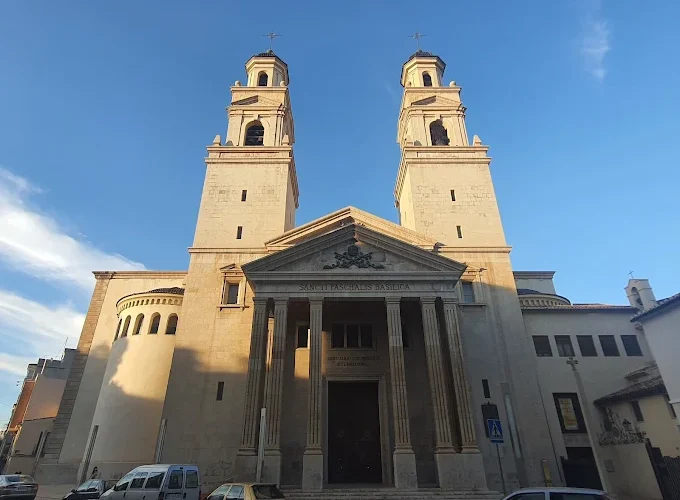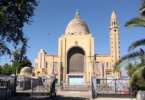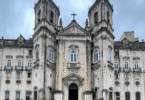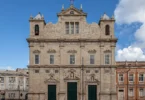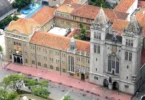Introduction
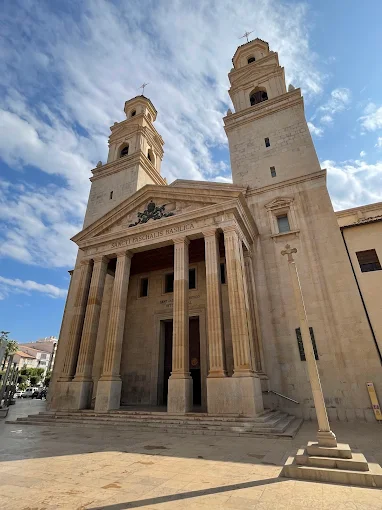
The Sanctuary of St. Paschal Baylon (in Valencian: Santuari de Sant Pasqual Bailón), popularly known as El Sant, is a prominent religious and cultural complex situated in Villarreal (Vila-real), in the province of Castellón, within Spain’s Valencian Community. This revered site is dedicated to Saint Paschal Baylon, a Franciscan lay brother canonized for his profound devotion to the Eucharist and acts of humility. The sanctuary stands as one of the most significant pilgrimage destinations in the region, drawing both devout visitors and tourists alike. At the heart of the sanctuary is the International Eucharistic Votive Temple, which was elevated to the status of a minor basilica by Pope John Paul II, highlighting its spiritual and architectural importance. Also central to the complex is the Royal Chapel, which enshrines the tomb of Saint Paschal Baylon. Surrounding these sacred spaces are other key components of the sanctuary: the Museum of the Pouet del Sant, commemorating the saint’s life and miracles, and the historic convent of the Poor Clare Mothers, a cloistered religious community with deep historical roots.
Though the convent’s origins date back to the 16th century, its international renown is largely attributed to Saint Paschal Baylon himself, who lived, died, and was buried there. His presence transformed the monastery into a venerated pilgrimage site. The original Royal Chapel, constructed in the 17th century, was a pioneering example of Valencian Baroque architecture. Tragically, both the chapel and the convent’s original church were destroyed during an arson attack in 1936 amid the Spanish Civil War. Today, a new church—though still incomplete—stands on the site and remains open for worship. The new Royal Chapel, completed in 1992 and inaugurated by King Juan Carlos I, now houses the saint’s relics. Restoration efforts have preserved several historically significant parts of the original monastery, such as the cloister, the grand staircase, the De Profundis room, and the refectory, where Saint Paschal’s seat has been conserved alongside that of Blessed Andrés Hibernón. Notably, the sanctuary features two bell towers that are home to a remarkable carillon of 72 bells, along with 12 swinging bells, including the largest swinging bell in the world—further underscoring the site’s unique spiritual and cultural legacy.
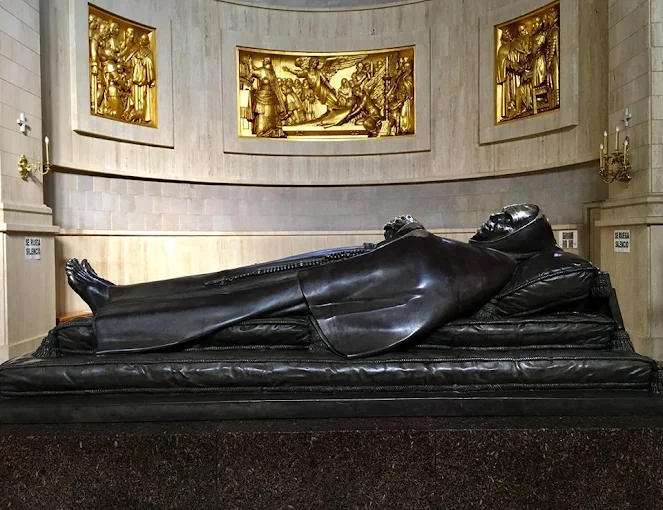
Origins in the 16th Century
The origins of the sanctuary trace back to the late 16th century. In 1575, Pope Gregory XIII issued a papal bull granting the Franciscan Order, reformed by Saint Peter of Alcántara, permission to establish a new convent in the Kingdom of Valencia. Initially, the friars settled in the hermitage of the Virgen de Gracia, located on the banks of the Mijares River in the town of Villarreal. However, the friars later received authorization from the local Juries to occupy a different hermitage located just outside the town. This location, known as the suburb along the Castellón road, eventually became known as the “Arrabal de San Pascual”, named after the future presence of the convent and church. The area was contested by the Dominicans, who also claimed rights to the hermitage.
Dedication to Our Lady of the Rosary
The hermitage had been originally founded on October 14, 1571, by the people of Villarreal to commemorate the Christian victory at the Battle of Lepanto (October 7, 1571) over the Ottoman Empire. The victory coincided with the feast day of the Virgin of the Rosary, to whom the hermitage was dedicated. In November 1578, the Discalced Franciscans of the Alcantarine branch took possession of the hermitage. They expanded the structure and constructed a new convent, maintaining its dedication to the Virgin of the Rosary. The building was erected following the austere architectural principles of the Franciscan order, evident in features like the cloister, interior stairs, the De Profundis room, refectory, and exterior walls.
The Arrival of Saint Pascual Baylón
The monastery gained widespread recognition due to the presence of Saint Pascual Baylón, an Alcantarine friar. He had first visited the site in 1587, and in 1589 he was officially assigned to the convent in Villarreal, where he lived until his death in 1592. That same year, the friars dug a well in the cloister, known as the “Pouet del Sant”, believed to produce healing waters. After Saint Pascual’s death, he was buried at the foot of the altar of the Immaculate Conception within the church due to his widespread reputation for holiness. The site quickly became a place of veneration.
Royal Support for the Beatification
King Philip II of Spain authorized the beatification process, which was later promoted by his son, Philip III. In 1599, Philip III and his wife Margaret of Austria personally visited the sanctuary to pray at the saint’s tomb.
Destruction and Reconstruction in the 18th Century
In 1706, during the War of the Spanish Succession, Villarreal was attacked by Bourbon forces under the Count of las Torres. The troops set fire to the convent archives and damaged several buildings. In 1721, the convent underwent renovation, including the construction of a second cloister adjacent to the original.
Celebrations and Bullfights
In 1791, on the centenary of Saint Pascual’s canonization, extensive celebrations were held, including a series of bullfights, the proceeds of which supported the convent. The bullfights were held in the nearby plaza de toros (bullring).
19th Century Challenges and Restoration
During the Napoleonic invasion, the friars hid the saint’s body to protect it from desecration. It was returned to its place in the church on July 31, 1812. In 1835, due to the Confiscation Laws in Spain, the Franciscan community was exclaustrated. However, the convent was reoccupied in 1836, this time by Franciscan nuns from the Convent of Santa Clara in Castellón de la Plana.
Recognition by the Holy See
On May 15, 1899, a National Pilgrimage was organized to honor Saint Pascual. Then, on March 28, 1908, the Holy See issued a decree officially granting the Poor Clare nuns the right to care for the Royal Chapel and the saint’s tomb.
Early 20th Century Developments
In the year 1911, two notable events marked the continued religious significance of the sanctuary. A Valencian pilgrimage was organized to close the Eucharistic Congress held in Madrid, reflecting the sanctuary’s growing importance in national religious life. Additionally, on August 8, a new bell gable was constructed at the site to accommodate two new bells, enhancing the auditory presence of the church in the town of Villarreal and symbolizing a renewal of faith and devotion.
Destruction During the Spanish Civil War
Tragedy struck the sanctuary on August 13, 1936, in the early months of the Spanish Civil War. An anarchist group from outside Villarreal desecrated and set fire to the sanctuary, leaving the revered building in complete ruins. This event not only destroyed a vital religious structure but also disrupted the continuity of worship and pilgrimage that had been established over centuries.
Post-War Reconstruction
Efforts to rebuild the sanctuary began on May 17, 1942, the feast day of Saint Pascual, with the laying of the first stone of the new temple. The reconstruction project was made possible through anonymous donations from the faithful, reflecting deep communal reverence for the saint. Actual construction commenced on June 13, 1949, and progressed steadily. By May 17, 1971, the first phase of the construction was completed, culminating in the consecration of the new altar on May 23 of the same year. During this time, Saint Pascual’s relics were transported to Munich in 1960 for veneration at the Eucharistic Congress, symbolizing the international devotion to the saint.
Consecration and Worship Restoration
In February 1974, the newly rebuilt sanctuary was officially opened for worship during the seventh centenary of Villarreal’s founding. The consecration was presided over by the Provincial of the Franciscan Order, signifying both a return to spiritual normalcy and a renewed dedication to Eucharistic worship under the patronage of Saint Pascual Baylón.
Late 20th Century to Present Day
The final decades of the 20th century saw renewed momentum in completing and beautifying the sanctuary, largely inspired by major anniversaries. In 1991, marking the centenary of Saint Pascual’s death, and in 1992, the centenary of his canonization, major structural works were finalized. These included the completion of the main façade and the erection of two bell towers, restoring the grandeur of the sanctuary. A new main altar was also installed, featuring a sculpture by José Ortells, a renowned artist from Villarreal. Additionally, the Royal Chapel was reconstructed under the direction of Vicente Lloréns Poy, further enhancing the spiritual and architectural presence of the site.
Papal Recognition and National Importance
On March 25, 1996, Pope John Paul II formally elevated the sanctuary to the status of minor basilica, recognizing its historical, religious, and cultural significance. At the same time, he declared Saint Pascual Baylón the “Universal Patron of Eucharistic Worship”, a title that acknowledged the saint’s profound devotion to the Blessed Sacrament. This honor was further celebrated during the 7th National Eucharistic Congress, held at the basilica on September 15, 1997, affirming the sanctuary’s role as a national center of Eucharistic spirituality and pilgrimage.
Architecture of Basilica of St. Paschal Baylon, Villareal, Spain
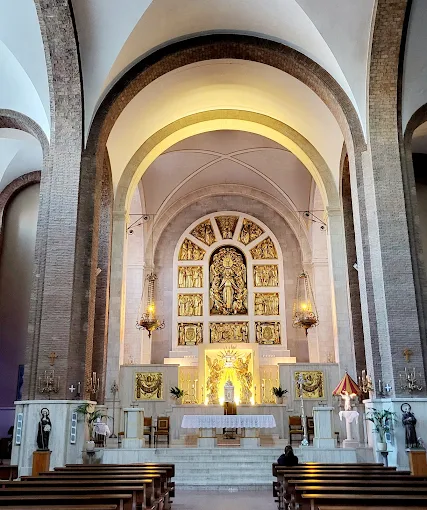
Architectural style : Baroque architecture
Burials : Paschal Baylón
Temple and Former Convent Church
History and Original Structure
When the Alcantarine friars settled in the Rosary Chapel in 1578, they undertook the construction of a convent church. This original church featured a single nave with a groin vault and no transept, consisting of four distinct bays. From the main entrance, the first bay contained a high choir loft. The nave was flanked by Corinthian pillars, and between the buttresses on either side were chapels dedicated to notable saints: Saint Anthony of Padua, Saint John the Baptist, and the Virgin of Sorrows. The second bay housed an oval chapel dedicated to Saint Peter of Alcántara. Its foundation stone was laid on May 24, 1764, and the chapel was completed on July 26, 1765. This chapel was adorned with an image of Saint Peter created by sculptor Ignacio Vergara and decorated with paintings by his brother, José Vergara. These paintings depicted the glorification of various Franciscan saints and were finished on August 28, 1765.
The church’s main altar honored the Virgin of the Rosary, the original patroness of the hermitage where the friars first settled. Flanking the main altar were altars dedicated to Saint Francis of Assisi and the Immaculate Conception. Unfortunately, this original convent church was destroyed by fire in August 1936 during the early months of the Spanish Civil War and no longer exists. The current International Eucharistic Votive Church was constructed on the remains of this fire.
Contemporary Church
The present-day church preserves some artistic and historical elements saved from the 1936 fire. The presbytery is dominated by a silver monstrance supported by two gilded angels, sculpted by José Ortells in 1952. These angels were originally used to hold the saint’s remains. Adjacent to the portico, near the entrance gate, is a small chapel designed in a similar architectural style. This chapel houses the image of Saint Peter of Alcántara by Ignacio Vergara, which survived the fire. On display within the church, in the Pouet del Sant museum room located on the ground floor of the Royal Chapel, are several valuable artistic and historic pieces dating from the 16th to the 20th centuries that were rescued from the fire. This museum room also houses the Pouet del Sant (Saint’s Well), dating back to 1589, renowned for its holy water appreciated by the faithful.
Royal Chapel
Origins and Construction
In 1674, following Pope Clement X’s initiation of the canonization process for Blessed Pascual Baylón, the municipal council of Villarreal and the Alcantarine friars decided to build a dedicated chapel next to the convent church. Its purpose was to enshrine the saint’s remains in an urn. Construction was completed six years later. However, a dispute arose between the local government and the Franciscan Province of San Juan Bautista over the placement of their respective coats of arms on the chapel’s altarpiece. The conflict escalated to the Government of Valencia but was eventually resolved when both parties agreed to offer royal patronage to King Charles II of Spain. King Charles II accepted and, by Royal Order issued on April 18, 1681, mandated that his coat of arms be prominently displayed on the chapel. Nine days later, the body of Saint Pascual Baylón was solemnly transferred to the new tomb, with the Viceroy of Valencia, the Count of Aguilar, in attendance.
Baroque Chapel (Original Royal Chapel)
The original Royal Chapel was an exquisite example of Valencian Baroque architecture. Its spacious interior featured walls adorned with sgraffito paintings, ceramic panels with plant motifs, and Eucharistic-themed plinths. Eight canvases by Domingo Saura depicted miracles performed by Saint Pascual. The chapel’s centerpiece was a gilded wooden Baroque altarpiece containing a glass urn that held the incorrupt body of the saint. A rear dressing room, accessible by a side staircase, was richly decorated in Baroque style and allowed visitors to observe and venerate the saint’s remains. Tragically, this chapel was destroyed by fire in August 1936, just months after the outbreak of the Spanish Civil War. Relics salvaged from the fire were transferred to the archpriestal church of San Jaime and remained there until 1952.
Post-War Restoration and Contemporary Royal Chapel
In 1952, a dressing room was installed in the saint’s original convent cell, where his remains were placed in a silver urn supported by a sculptural group created by José Ortells. The transfer ceremony took place on June 2 and was attended by many church officials and dignitaries present at the Eucharistic Congress in Barcelona. The sculptural group later became part of the main altar display in the new church. On May 17, 1992, marking the 400th anniversary of Saint Pascual Baylón’s death, the new Royal Chapel was inaugurated. Sculpted by Vicente Lloréns Poy, this chapel houses the saint’s remains in a new silver tomb—a recumbent statue crafted from 300 kg of silver set on a granite base with two steps for easier veneration. The tomb was inspired by the incorrupt body once displayed before the 1936 fire and is placed directly in front of the saint’s former cell, beside which lies Saint Pascual’s handwritten devotional notebook.

Altarpiece and Artistic Features
Above the cell stands a 14-meter-high altarpiece featuring fifty finely gilded figures. The central panel portrays the glorification of Saint Pascual surrounded by angels and Eucharistic symbols, reflecting his patronage of Eucharistic Congresses. Below, a depiction of the saint’s death is flanked by two shields held by angels: one bearing the coat of arms of Charles II of Spain (the chapel’s original protector), and the other that of Juan Carlos I of Spain, reigning at the time of the chapel’s inauguration.
At the keystone of the central arch is an image of the Holy Spirit and the Virgin Mary under the title of Our Lady of Grace, patron saint of Villarreal. The four side panels contain the twelve apostles, distributed with three figures on each panel. The right side ascending order includes Saint Robert Bellarmine and Popes Alexander VIII and Leo XIII. The upper panel displays Saint Vincent Ferrer, Saint John the Baptist, and Saint Elizabeth of Portugal. On the left side are Saint Juan de Ribera, Blessed Nicolás Factor, and Andrés Hibernón (companion of Saint Pascual) on the lower panel, and Saint Clare of Assisi, Saint Francis of Assisi, and Saint Peter of Alcántara on the upper panel.
Artistic Features and Architectural Design of the Royal Chapel
The Royal Chapel is richly adorned with artistic elements that enhance its spiritual atmosphere. At the foot of the tomb, a gilded bronze Eucharistic relief draws the faithful’s attention, symbolizing the central mystery of the Eucharist. Surrounding the chapel, a cycle of six semicircular sculptural panels narrates key moments from the life of Saint Pascual Baylón, inviting visitors to contemplate his virtues and legacy. Near the entrance, three panels vividly illustrate pivotal episodes: the young shepherd Pascual receiving the Alcantarine sackcloth from Saints Francis and Clare; his stoning in France alongside the triumph of the Eucharist; and his roles as writer and master of novices. In the frontal apse, three further panels portray Saint Pascual’s charitable works, his funeral rites, and the historic meeting between Father Ximénez and King Philip II to promote Pascual’s canonization. Architecturally, the chapel harmoniously blends local stone with Roman travertine cladding, resting on a foundation of granite flooring. Decorative details—including reliefs, gates, votive lamps, candlesticks, and sconces—are masterfully crafted from patinated gold and chiseled metal, seamlessly integrating with the chapel’s elegant design to create an atmosphere of reverence and artistic splendor.
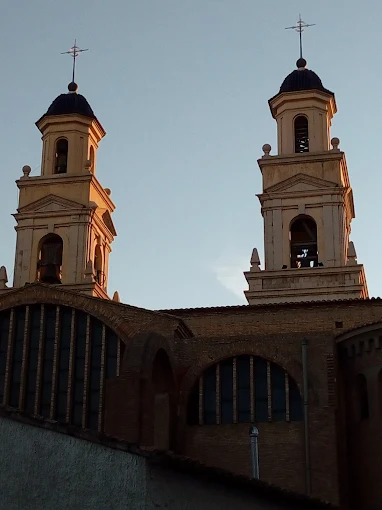
Carillon and Bell Towers
On May 17, 1998, the feast day of Saint Pascual, the basilica inaugurated its carillon and set of swinging bells housed in its twin bell towers. The 84 bells were blessed by Cardinal Antonio María Javierre and donated by local businessman José Gómez Mata. The inaugural concert was performed by Belgian carillonist Aimé Lombaert and recorded for free distribution. In 2001, a special concert honored Saint Pascual and Ana Viñes Rubert (wife of José Gómez), performed by Japanese carillonist Yuko M. Tajima.
Specifications and Features of the Carillon Bells
The carillon of the Royal Chapel boasts a remarkable assembly of 72 bells, collectively weighing 23,500 kilograms of bronze, excluding fittings. These bells were expertly designed and installed by the Belgian firm Clock-o-Matic and manufactured by the renowned Dutch company Royal Eijsbouts. Complementing this, the east tower houses 12 swinging bells crafted by Fonderie Paccard in Haute-Savoie, installed by Ermec.org from Badalona. Together, these bells form the largest musical instrument in the world by number of individual bells. Within the east tower, eight automated swinging bells, totaling approximately 6,000 kilograms without accessories and spread across two floors, bear sacred names such as Santísimo Sacramento—the largest ringing bell globally, weighing 2,000 kilograms of bronze and 3,360 kilograms in total with a diameter of 1.5 meters—San Pascual, Virgen de Gracia, Virgen Purísima, Virgen del Rosario, San Francisco de Asís, San Pedro de Alcántara, Santa Clara, San José, Santa Ana, Natividad del Señor, and Espíritu Santo. Additionally, four other bells in this tower are fixed and sounded using electro-hammer mechanisms. The west tower’s 72 carillon bells vary widely in size, from the substantial 2,200-kilogram bells down to ones as light as 6 kilograms, enabling an extensive and versatile musical range.
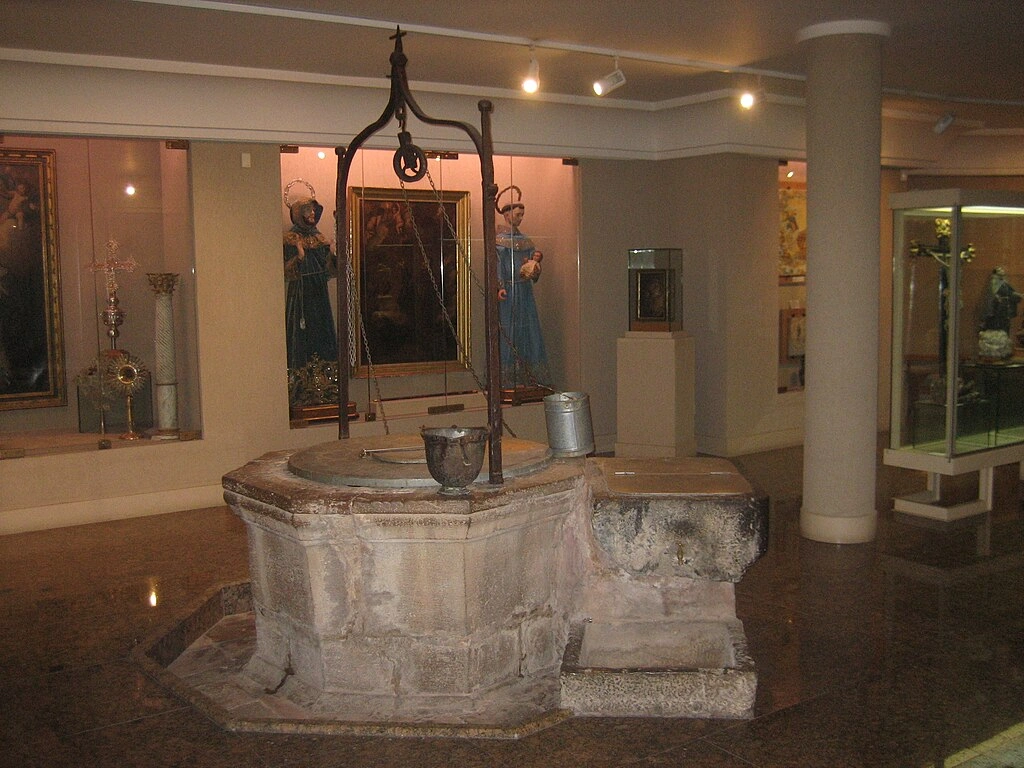
Royal and Notable Visits to the Sanctuary of St. Paschal
The Sanctuary of St. Paschal has long been a place of great religious and historical significance, attracting visits from numerous monarchs and dignitaries throughout the centuries. Notably, King Juan Carlos I inaugurated the Royal Chapel in 1992 during the 4th centenary celebrations of St. Paschal’s death, an event that highlighted the sanctuary’s royal patronage with the inclusion of the king’s coat of arms on the altarpiece. Earlier royal visitors included members of the House of Habsburg such as Philip III and Philip IV, as well as Bourbon monarchs including Charles III, Charles IV, Ferdinand VII, Queen Isabella II, King Amadeo I, and Alfonso XIII. The sanctuary also received visits from other notable figures such as Francisco Franco in 1958 and religious leaders like Herman Schalück and Papal Nuncio Mario Tagliaferri in 1993, who participated in significant commemorative ceremonies and blessings. These visits underscore the sanctuary’s enduring importance as both a spiritual center and a site of historical heritage.
Feast Day
Feast Day : 17 May
The Feast Day of St. Paschal Baylon is celebrated on May 17 each year at the Basilica of St. Paschal Baylon in Villarreal, Spain. This date marks the anniversary of the saint’s death and is observed with religious ceremonies, including Masses and processions, honoring his deep devotion to the Eucharist.
Church Mass Timing
Monday to Saturday : 7:00 PM
Sunday : 11:00 AM
Church Opening Time:
Monday to Sunday : 9:00 AM – 1:00 PM, 4:00 PM – 8:00 PM
Contact Info
Address : Basilica of St. Paschal Baylon
Carrer Sant Pasqual, 70, 12540 Vila-real, Castelló, Spain.
Phone : +34 964 52 03 88
Accommodations
Connectivities
Airway
Basilica of St. Paschal Baylon, Villareal, Spain, to Castellón-Costa Azahar Airport, distance 29 min (38.0 km) via CV-10.
Railway
Basilica of St. Paschal Baylon, Villareal, Spain, to Castelló de la Plana Carrer del Pintor Oliet Railway Station distance between 13 min (7.1 km) via Carr. Nacional/N-340a and Av. Enrique Gimeno/N-340a.

